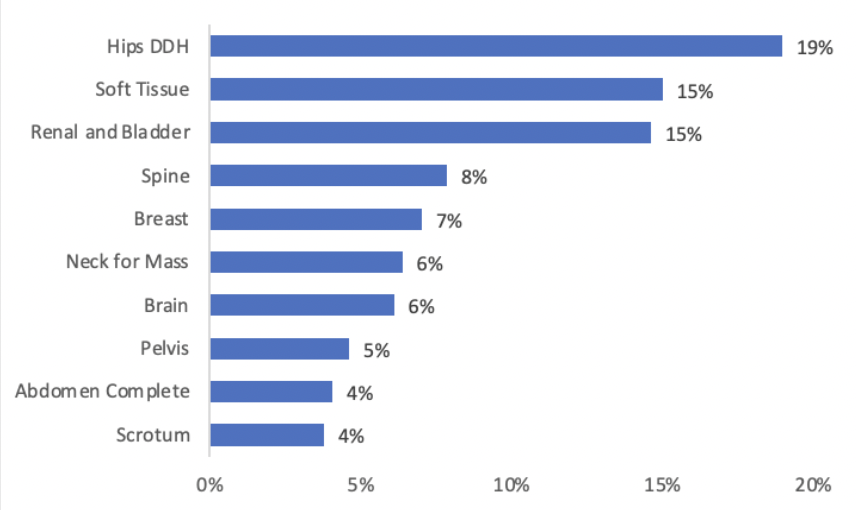General Pediatrics
Session: General Pediatrics 1
232 - Point of Care Ultrasound in Pediatric Primary Care
Friday, May 3, 2024
5:15 PM - 7:15 PM ET
Poster Number: 232
Publication Number: 232.382
Publication Number: 232.382

Alexandra Surget, MD (she/her/hers)
Resident
Childrens Hospital of Philadelphia
Philadelphia, Pennsylvania, United States
Presenting Author(s)
Background: The advent of Point-of-Care Ultrasound (POCUS) has allowed physicians from varying specialties to quickly obtain ultrasound images at the bedside to enhance clinical decisions. In pediatrics, POCUS has slowly been gaining traction in all areas of the hospital including emergency departments, intensive-care units, hospital medicine, anesthesiology and even subspecialty practices such as rheumatology and sports medicine. Although pediatric POCUS is growing, one setting that has yet to adopt this imaging modality is outpatient Pediatric Primary Care (PPC).
Objective: The purpose of this study will be to explore what types of ultrasound exams are ordered most frequently in PPC (some of which may be amenable to POCUS), as well as assess how often these studies are completed once a referral is made and evaluate if there are demographic disparities in rates of ultrasound completion.
Design/Methods: We conducted a retrospective chart review of ultrasound studies ordered from January 1 to December 31, 2021, at each of the three Children’s Hospital of Philadelphia resident primary care clinics.
Results: The ten most common ultrasound orders are listed in Table 1. Of all the ultrasounds ordered, 66.7% were completed (Table 2). When comparing completion rates across different patient populations, completion rates were lower among patients who identify as Hispanic or Latino and non-Hispanic Black compared to patients who identify as non-Hispanic White and Asian (Table 3). The mean time to completion from order placement was about 4 weeks (29 days), however, this varied greatly depending on the type of study ordered with a range from 0 days (study completed on the day the order was placed) to over a year (556 days).
Conclusion(s): Many different types of ultrasounds are ordered in the PPC setting, however, only about two-thirds are completed and completion rates are lower in Hispanic or Latino and non-Hispanic Black patient populations in comparison to their non-Hispanic White and Asian counterparts. Some of these studies may be amenable to POCUS, as there is already existing literature on the use of POCUS for various applications such as soft tissue evaluation (to assess for foreign bodies and abscesses), kidney and bladder evaluation (to assess for urinary retention, hydronephrosis, or renal stones), as well as neck, brain and spinal ultrasound. The use of POCUS in the PPC environment, either as a screening or final diagnostic tool, could lead to higher completion rates, address underlying disparities in the completion of studies, and decrease time to completion so as to not delay appropriate clinical care.

.png)
.png)
